When it comes to the production of sterile (aseptic) eye drops, the presence of bacteria is strictly prohibited. For this reason, we pay close attention to air management, and only trained and certified workers are engaged in the production of sterile products. In the filling zone, we maintain a Grade A air cleanliness level, equivalent to a surgical operating room.
Furthermore, in order to comply with established product standards, meticulous adjustment and careful maintenance of dispensing and filling machines is essential because even the slightest distortion during installation of a single component can affect the quality of the product. With multiple lines operating simultaneously, we must be able to quickly and calmly determine the status of each machine, the cause of the problem, and the best course of action. Assessment and response tend to be based on the tacit knowledge of each individual, who draws on their experience and intuition. However, maintaining a stable supply of high-quality products demands that everyone is working from the same playbook; as such, “visualizing” tacit knowledge and skills and making it available to others as formal knowledge is critically important.
Our goal is to make the setting up and post-maintenance verification process procedural and quantifiable so that everyone on the team can achieve a high level of operational excellence.
Santen is committed to promoting a quality culture that provides a stable supply of high-quality products while enhancing confidence in the pharmaceutical industry as a whole.
“Quality culture” refers to a corporate culture focused on quality that establishes a firm foundation for the mindset and behavior of employees.
The production process for eye drops incorporates five main steps: (1) purified water production, (2) formulation, (3) filling, (4) inspection, and (5) packaging/storage. Each step in the process is conducted in compliance with optimal production quality control standards. Santen pursues high product quality through the use of high-purity water, by maintaining a clean production environment subject to strict environmental management, and through the rigorous training of production teams. Employees involved in production and quality assurance support the manufacturing of high-quality products and their stable supply. In pursuit of quality and ease of use from the patient’s perspective, all members involved in production comply with GMP* and receive regular education and training.
- Standards for Manufacturing Control and Quality Control for Drugs and Quasi-drugs.
In this issue, we will introduce how dispensing, filling, and packaging affect the quality of eye drops, and share comments from the expert “craftsmen” who make sure these processes function properly.
Eye Drop Manufacturing Process
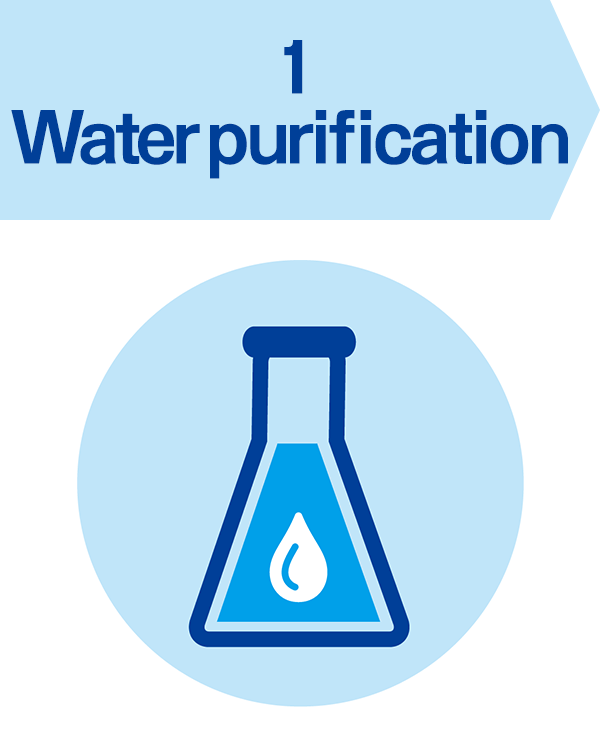
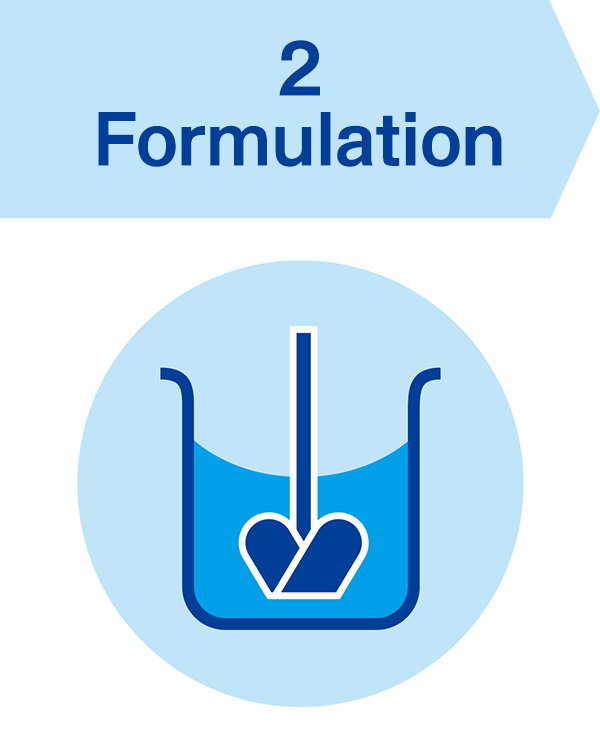
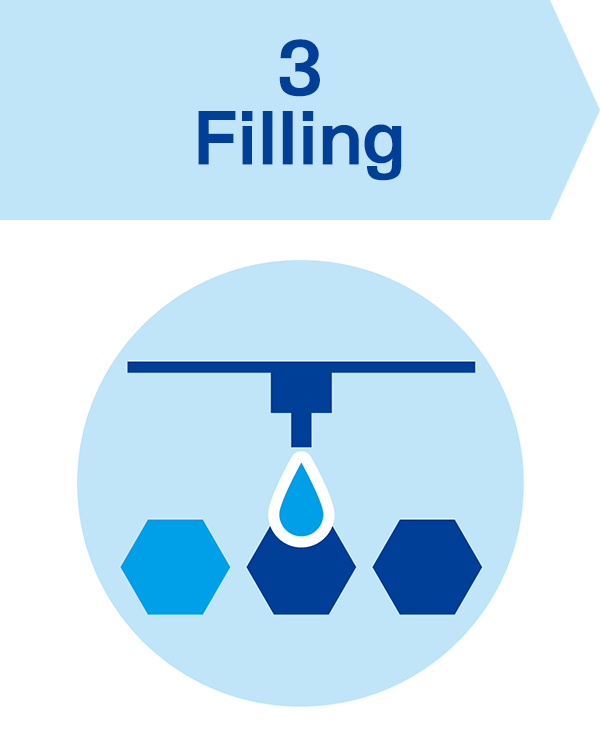
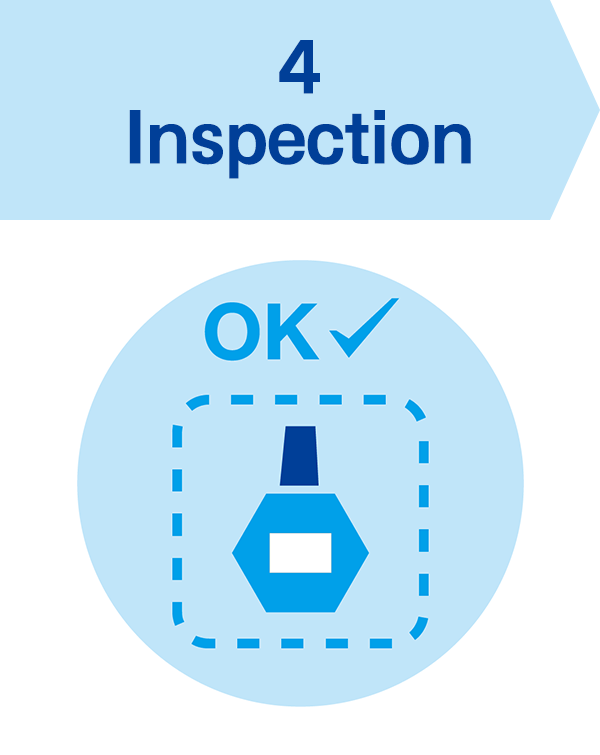
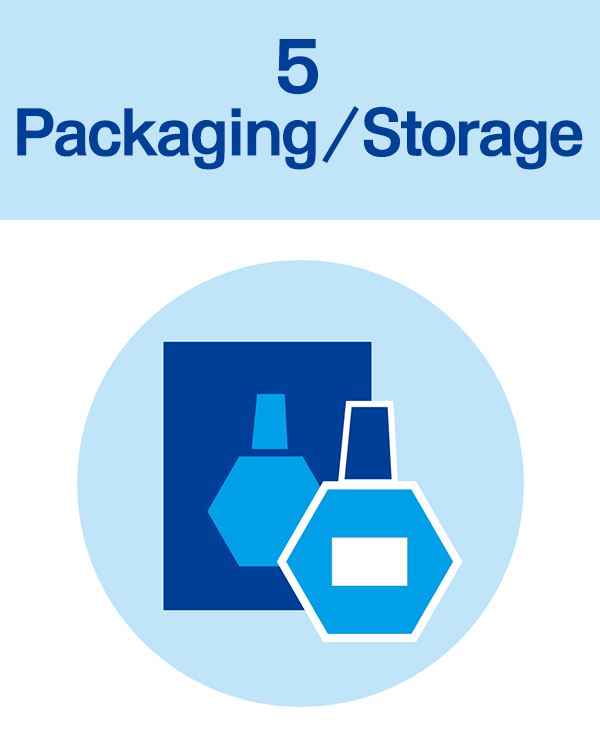
Transforming tacit knowledge into formal knowledge to maintain a high-quality product supply
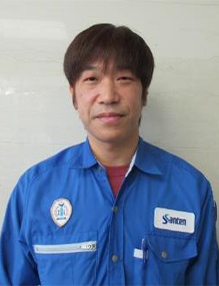 Yoshihisa
Yoshihisa Matsumoto
Noto Manufacturing Team 1, Noto Plant, Manufacturing DivisionYoshihisa Matsumoto
Noto Manufacturing Team 1, Noto Plant, Manufacturing Division
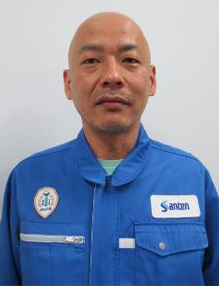 Kazuyoshi
Kazuyoshi Hoshiba
Noto Manufacturing Team 2, Noto Plant, Manufacturing DivisionKazuyoshi Hoshiba
Noto Manufacturing Team 2, Noto Plant, Manufacturing Division
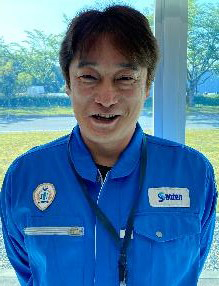 Naoki
Naoki Kishida
Shiga Manufacturing Team 2, Shiga Plant, Manufacturing DivisionNaoki Kishida
Shiga Manufacturing Team 2, Shiga Plant, Manufacturing Division
Members from the Formulation Team, Production Division
We are responsible for the dispensing and filling processes, where maintaining a high level of air cleanliness is essential.

Aseptically controlled filling room

Visual confirmation of dispensing tank operation
Furthermore, since learning and awareness can be gained through hands-on experience, we emphasize on-the-job training (OJT) that is tailored to the abilities and personalities of each member. We are constantly looking for opportunities to achieve more solid and stable operations, further improving our techniques and skills and passing them on to others.
Maximizing on-site ability and achieving stronger, more stable operations
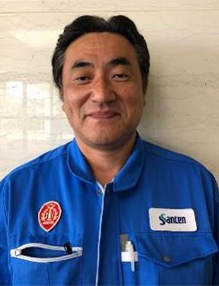 Tadashi
Tadashi Kajihara
Noto Packaging Team 1, Noto Plant, Manufacturing DivisionTadashi Kajihara
Noto Packaging Team 1, Noto Plant, Manufacturing Division
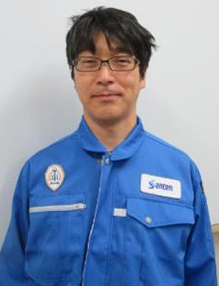 Tetsuo
Tetsuo Nozaki
Noto Packaging Team 1, Noto Plant, Manufacturing DivisionTetsuo Nozaki
Noto Packaging Team 1, Noto Plant, Manufacturing Division
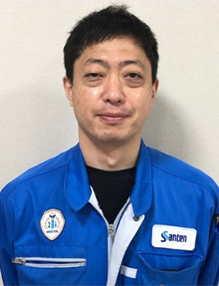 Kenichi
Kenichi Hosomichi
Noto Packaging Team 2, Noto Plant, Manufacturing DivisionKenichi Hosomichi
Noto Packaging Team 2, Noto Plant, Manufacturing Division
Members from the Packaging Team, Production Division
After the dispensing and filling process, the product is inspected and packaged. After accurate labeling, printing, and packaging, the final product is delivered to the patient.
The packaging process includes wrapping with shrink labels (plastic labels that shrink when heated), printing expiration dates and other information, the inner box and accompanying documents, and the outer box. Each step in the packaging process requires high-quality operations at production speed. This is made possible through a combination of innovative manufacturing machinery and skillful and knowledgeable operators.
The malfunction of a single part can render a complex machine inoperable. To reliably produce the planned quantity of products on a daily basis, we must pay close attention to every detail on the line, anticipate issues, and think ahead—for example, “This part will need to be replaced soon, so let's place an order for it now.” The production line operates 24 hours a day, and there are times when we have to resolve problems on our own—such as late at night when outside support is not available. We make an effort to pass on our expertise by taking the entire team on site to improve their knowledge and skills.
We will continue to manage the daily production process with pride knowing that the technologies we have developed and refined are responsible for supporting the stable supply of high-quality products that directly contribute to patients.

Print inspection equipment designed and manufactured by members involved in packaging. Printing on the outer box using packaging equipment

Checking equipment designs to make improvements and innovations
■Recovery from the Noto Peninsula Earthquake
Santen’s plant on the Noto Peninsula was damaged by an earthquake in January 2024. Employees in Noto were also affected by the earthquake, but quickly assessed the damage and formulated a recovery plan, driven by their mission to support the stable supply of products.
While placing the highest priority on employee safety, employees worked diligently to resume production so that by the end of March, most of the production lines were back in operation. Such a quick recovery was only made possible by their deep sense of responsibility for production. By the end of September 2024, full restoration will have been achieved following verification in accordance with GMP standards.

The Noto Plant, completed in 1985, is one of the world's largest manufacturers of ophthalmic solutions.
<Santen and the Noto Peninsula Earthquake>
The Noto Plant is the Company’s main plant and is responsible for more than 60% of the Santen Group’s manufacturing output, so a prolonged shutdown could have had a tremendous impact on business continuity. Therefore, on the day after the earthquake, we set up a Crisis Management Committee and BCP Headquarters, and established a framework for early restoration and stable supply while placing top priority on the safety of our employees.→For more details, please see the Integrated Report
By sharing know-how among the plants and exchanging human resources across regions and departments, Santen will promote collaboration among employees and further enhance their knowledge and skills while delivering high-quality products to patients around the world.



